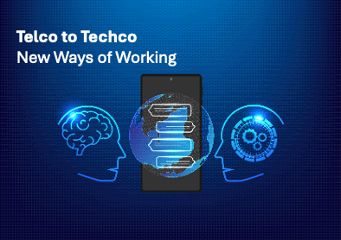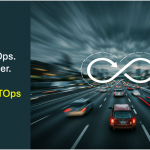The telecommunications (telco) industry is undergoing a seismic shift, moving from its traditional role as a provider of connectivity services to becoming a technology-driven organization, or “techco.” This transition is more than a buzzword; it reflects the necessity for telcos to stay competitive in a digital-first economy by adopting a new operating model that leverages technology as its cornerstone.
In our last posting, we laid out a summary definition and the case for what a transition from legacy/traditional telecommunications provider to a more digital, IT-based communications and IT services provider means, that is “Telco to Techco”.
In this blog, we begin to explore the steps and a framework for:
- Embarking and completing the journey from telco-to-techco transformation
- Why it’s essential, and
- The operating model required to achieve it
Why Transition from Telco to Techco?
The telco industry faces multiple disruptions:
- Evolving Consumer Expectations: Customers demand seamless, digital-first experiences similar to those offered by tech giants.
- Market Saturation: Traditional telco markets, such as voice and text, are stagnant or declining.
- Emerging Technologies: 5G, IoT, AI, and cloud computing present opportunities for revenue growth but demand greater technological agility.
- Competition from Non-Traditional Players: OTT (over-the-top) services like WhatsApp and Zoom have eroded traditional telco revenues.
To remain relevant, telcos must evolve into techcos, embracing technology not just as an enabler but as the foundation of their business.
The Techco Operating Model
The transition to a techco demands a radical overhaul of the telco operating model. This involves changes across multiple dimensions:
1. Customer-Centric Innovation
Techcos thrive on understanding and anticipating customer needs. This means moving from a network-centric mindset to a customer-centric approach by:
- Investing in data analytics to derive actionable insights.
- Leveraging AI-driven personalization to enhance customer experiences.
- Co-creating solutions with customers and partners.
2. Agile Organizational Structure
Traditional telcos are often siloed, leading to inefficiencies. A techco model requires:
- Adopting agile methodologies for faster product development.
- Creating cross-functional teams to break down silos.
- Upskilling employees in emerging technologies.
3. Platform-Based Business Models
Instead of just providing connectivity, techcos act as enablers for ecosystems. Examples include:
- IoT platforms for smart homes and cities.
- Cloud and edge computing solutions for enterprises.
- Developing APIs to facilitate third-party integrations.
4. Technology as the Core
Technology is no longer a support function but the lifeblood of operations:
- 5G as a catalyst: 5G technology supports new use cases like autonomous vehicles, AR/VR, and massive IoT deployments.
- Cloud-first strategies: Moving operations to the cloud ensures scalability and flexibility.
- AI and automation: Optimizing network performance, customer service, and operations.
5. Digital Revenue Streams
To diversify revenue, telcos must expand into techco-driven areas like:
- B2B digital solutions: Cybersecurity, analytics, and cloud services.
- Digital content: OTT services, gaming, and e-learning platforms.
- Fintech: Mobile payments and digital wallets.
6. Culture of Continuous Learning
The transformation is as much about people as it is about technology. Organizations must:
- Promote a culture of innovation and experimentation.
- Invest in reskilling and upskilling employees.
- Encourage collaboration across traditional boundaries.
Challenges in the Telco-to-Techco Transition
While the benefits are clear, the journey to becoming a techco is fraught with challenges:
- Legacy Systems: Modernizing decades-old infrastructure is expensive and time-consuming.
- Cultural Resistance: Shifting mindsets from “we are a network company” to “we are a tech company” takes effort.
- Competition for Talent: Attracting and retaining tech-savvy talent is critical but challenging.
Addressing these challenges requires strong leadership, a clear vision, and a willingness to embrace disruption.
Case Studies: Telcos Making the Leap
- Reliance Jio (India): Positioned itself as a techco by offering 4G connectivity bundled with digital services like JioSaavn (music) and JioTV (video).
- Telstra (Australia): Focused on tech-driven solutions like IoT, cybersecurity, and cloud services while streamlining legacy operations.
- Vodafone: Transitioned into a digital tech company by integrating IoT platforms and becoming a leader in 5G solutions.
Conclusion
The telco-to-techco transformation is not a choice but an imperative for survival and growth in a rapidly digitalizing world. By adopting a techco operating model, telcos can unlock new revenue streams, improve customer experiences, and future-proof their business.
The road may be challenging, but for telcos willing to innovate and adapt, the journey to becoming a techco promises unparalleled opportunities in the digital economy.
In the next posting in this series, we will dive deeper into the next topic, how to create, institutionalize innovation and sustain a ‘continuous innovation’ factory within a communications services provider.
About the Author

Robert Erickson VP, Products, Strategy & Innovation Entrepreneur | Sustained Growth Expert | Strategist | Mentor & Team Builder
Robert is seasoned high-tech software executive with more than 30 years of proven industry experience, both in entrepreneurial and enterprise corporate settings. With proven track record of bringing to market dozens of enterprise-class commercial platforms and products, Robert has built and led high-velocity product and strategy teams of product managers, developers, sales teams, marketing teams and delivery units.
His mission is to help enterprises achieve sustainable competitive growth through innovation, agility, and customer-centric value.
@Robert – www.linkedin/in/ericksonrw






Leave a Reply